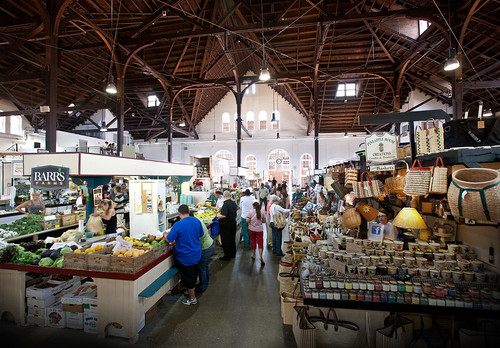
What better time than National Farmers Market Week to explore the history of farmers markets in the United States? Farmers markets are a critical ingredient to our nation’s food system, and date back to 1730 in Lancaster, Pennsylvania in the United States.
"Meet me at the Market" has for decades been a phrase commonly heard by Lancaster citizens. In 1730, when city planners designed the city they designated a 120 square foot lot in the center of town as a public market place giving birth to the Lancaster Central Market. Over the years the size of the market and the number of vendors has changed, but there’s evidence that the farmers market may have had 400 vendors at one point in time.
The buying and selling of fresh, local produce, meats and baked goods was so essential to daily life - especially in a market town like Lancaster - that from 1818 until after World War I several "curb markets" sprung up around the town as well. These "curb markets" consisted of local farmers and merchants setting up their wagons on the curb of the streets and selling their goods to the community.
The current Romanesque Revival market house was built in 1889. Today, Central Market is home to many families that have been coming to the market for generations. In 1995, it was designated one of the "Great Public Places" in America.
"We have been very fortunate to have Lancaster Central Market as a hub of our downtown since 1730,” said Jessica Mailhot, the Market Manager. “Even as times and tastes have changed, Central Market persevered and is more vibrant today than it has ever been. As a public Market, we strive to meet the needs of all people in our community.”
Farmers markets have increased in number and popularity over the years and continue to evolve into a favorite place to gather and socialize in many communities. With a maturing farmers market system, USDA is focusing its support on sustainability and encouraging market development in underserved areas – keeping new and old farmers markets thriving.
The original vendors at the Lancaster Central Market would find it hard to believe that today there are over 8,000 markets operating throughout the United States. The USDA National Farmers Market Directory helps connect farmers and consumers, communities and businesses around the country. And, thanks to wider use of smartphones and enhanced search tools like our directory API, consumers can search for farmers markets using mobile phone apps while on-the-go.
While much has changed over the years, one thing remains true – farmers markets are a vital source of fresh, locally produced foods with strong ties to our nation’s history.
